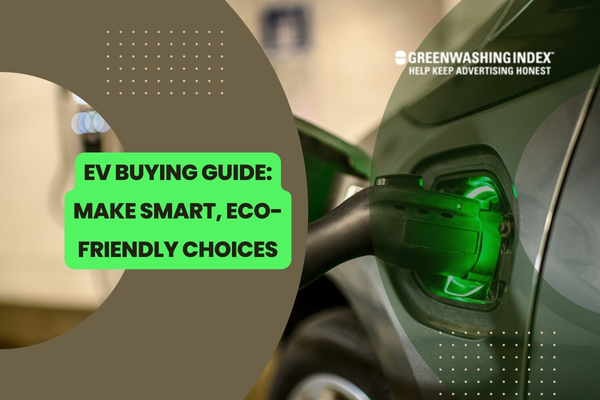Electric cars are the future, and maybe you’re thinking about making the switch. You’ve probably got a lot on your mind – will an electric vehicle (EV) fit into your life?
How far can it go? I hear you, and that’s why I’m here to guide you. This EV buying guide isn’t just a list of tips – it’s the beginning of your journey to becoming an eco-friendly driver.
If you’re pondering the big leap into owning an electric car, let me tell you straight: Electric vehicles are not just cool gadgets from sci-fi movies – they’re real, they’re here, and they might just be the right fit for your garage.
With their ability to zip around without a drop of gasoline and leave a greener footprint behind them, EVs are definitely worth considering. And this guide? It’s like your trusty map in this electric world – concise but packed with all you need.
What You’ll Discover Inside
- Clear-cut insights on EV benefits.
- No-nonsense advice for choosing the right electric car.
- Simple truths about costs and savings with EVs.
- Real-world tips on maintaining your electric vehicle.
- Straightforward facts for new vs. used EV shopping.
- Handy criteria to match an EV with your lifestyle needs.
Why Consider Purchasing an EV?
When I am out hunting for a new set of wheels, there’s a lot to think about. But if you’re leaning towards getting something that’s right for the future as well as now, then an electric vehicle (EV) might just be your best bet. Let’s dive deep into why buying an EV is a smart move.
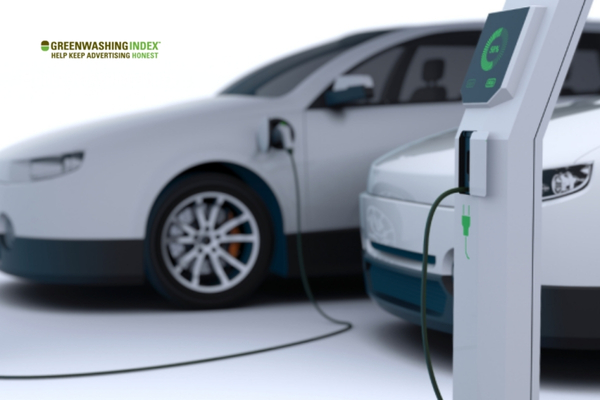
The Green Choice for Your Driveway
When I think about electric vehicles (EVs), the first thing that comes to mind is how they help keep our air clean. So, if you’re like me and care about our planet, here’s the main thing: EVs are way better for the environment than gas cars.
- No tailpipe: EVs don’t have an exhaust pipe puffing out dirty smoke. They run on batteries, so there’s no harmful stuff going into the air when you drive.
- Less smog: With fewer dirty cars on the road, we get cleaner air in our cities. That means it’s nicer to breathe when we’re walking around town.
- Energy from renewables: A cool thing about EVs is that they can run on energy from wind or sun power – not just fuel from under the ground.
- Less noise: Another bonus is that these cars are super quiet. No loud engines mean less noise pollution.
Buying an electric car isn’t just a personal choice; it’s a statement saying you care about keeping our skies blue and our trees green.
Embracing the EV Revolution
So, why are folks starting to switch from regular cars to electric ones? It’s like when phones went from having buttons to being all touchscreen – new tech takes over because it’s better.
Here’s what’s happening:
- Smart design: Electric vehicles have cool things like regenerative braking – which makes your battery last longer while driving.
- Plug-in at home: Imagine never going to a gas station again because you can charge up your car in your own garage while you sleep!
- Government support: Many places give you money back or other perks if you buy an electric vehicle.
- Cost of batteries dropping: Now that it costs less and less to make those big batteries for electric cars, buying one won’t empty your wallet as much.
This shift isn’t just because electric vehicles are trendy; they represent major steps forward in how we think about travel and caring for our Earth.
Deciding what kind of wheels to get next can be a big decision. But with this EV Buying Guide, knowing these EV essentials will make picking out an eco-friendly ride easier and clearer than ever before!
Also Read: Master Smell-Free Apartment Composting: An Ultimate Guide
Maximizing Electric Vehicle Potential
When we talk about electric vehicles (EVs), one big thing to think about is how much you can drive before the battery needs charging again. This is about the battery range. When I’m giving advice to folks who are interested in buying an electric car, I tell them it’s a key step in any EV buying guide.
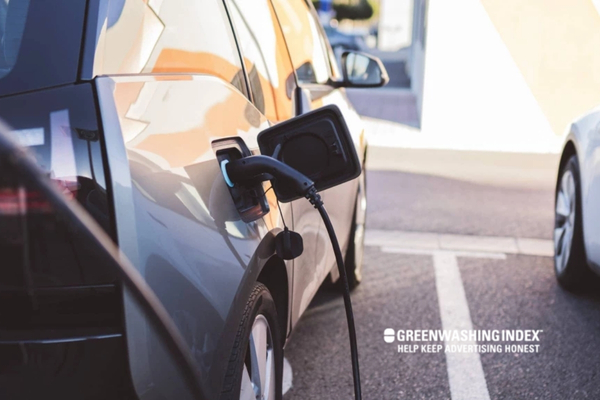
Assessing Battery Range for Your Needs
To understand how far an EV can go, we should look at its maximum battery range. This number tells you the longest distance the car can travel on a full charge under perfect conditions. But remember, lots of things change that distance.
First off, speed plays a huge part. If you drive fast all the time, just like with gas cars, your electric car won’t go as far as it could if you drove more slowly. So when I say “maximum” range, it means how far it can go without spending too much.
Next up is temperature. Just like people, batteries don’t work their best when they’re very cold or very hot. Cold weather makes them slow and not give as much power; hot weather can make them get tired faster.
So here’s what to check:
- Look at the Car’s Specs: Every EV has info on its maximum range – that’s your starting point.
- Consider How Fast You Drive: If you like pushing that speedometer higher often, take some miles off that top number.
- Think About Where You Live: The climate matters! If it gets really chilly or boils in summer where you are, those extremes will eat into your mileage.
- Remember Your Driving Habits: Stop-and-go traffic in cities will have a different impact than cruising smoothly on highways most of the time.
By thinking about these things – speed, temperature, and where you’ll be driving – you’ll get a clear idea of how an EV will fit into your life before making that big purchase.
It’s smart to build these ideas into your own personal EV buying guide because nobody knows better than yourself what kind of driving situations come up day after day for you!
Remembering this stuff helps make sure there are no surprises when using an electric vehicle in daily life!
Also Read: Pistachio Shells Compostability: Breaking the Myths
Understanding Charging Options – Convenience Wherever You Go
When you think about buying an electric vehicle or EV, it’s not just about the car itself. You’ve got to think about how you’re going to charge it.
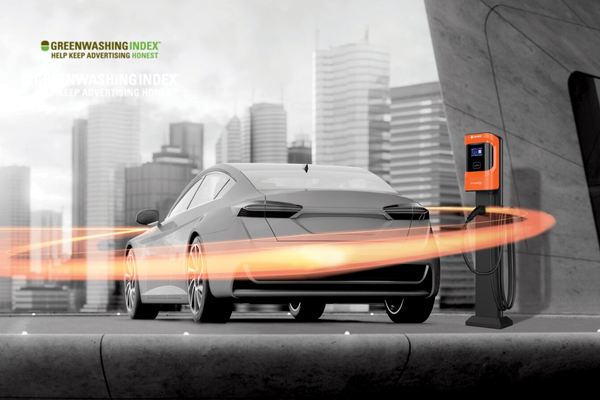
It’s like having a smartphone; you wouldn’t buy one without knowing how to keep its battery charged, right? So, let’s get into this key part of your EV buying guide – charging options.
Public Charging vs Home Setup
Imagine needing to power up your EV; where do you go? You can charge in two main ways: using public charging points or at home. Here’s what you need to know.
Public Charging
These are the chargers that are set up in places like shopping centers, parking lots, and gas stations. Public charging points can fill up your car way faster than what you might use at home because they have more power. Think of these as the rapid chargers for when you’re out and need a quick top-up.
Public chargers come in different types:
Level 1 Charging Stations:
- These are rare because they’re super slow.
- They use a standard outlet.
- It’s good if you’re parked all day or overnight.
Level 2 Charging Stations:
- More common than Level 1.
- Faster – they can fill most cars in a few hours.
- You’ll find these in shopping areas and public parking spots.
DC Fast Chargers (also known as Level 3):
- The quickest option out there.
- They can get your EV from almost empty to 80% charge in around half an hour.
But here’s something important: not all electric vehicles can use the fast ones – so check your car’s manual before plugging into a DC fast charger!
Now, onto power output:
- Level 1 is around 2-5 miles of range per hour of charging.
- Level 2 jumps up big time, giving about 10-60 miles per hour.
- For the fastest ones, Level 3? We’re talking about gaining hundreds of miles worth in just an hour!
Home Setup
Charging at home is more like kicking back and letting your phone charge overnight. No rush; just plug it in when you get home from work or before bedtime.
Most people will have:
- Level 1 Home Chargers: Just plug into the wall—you don’t need fancy equipment. Slow but steady wins the race kind of deal.
- Level 2 Home Chargers: Requires installation by an electrician. They are much faster; wake up to a fully charged car.
The cool thing about home charges is that you can save money, especially if your local electricity provider has off-peak rates for nighttime usage when everyone else is asleep and not using much power.
So which should you go for? Think about these:
- How much driving do I do daily?
- Can I wait for my car to slowly charge at home?
- Will I often need quick charges during busy days?
This part is essential when planning your EV purchase because following the routine for keeping your vehicle powered will save many headaches later on!
Also Read: Old Electronics Disposal: Ultimate Recycling Tips Guide
Charging Time – Patience Pays Off
When you’re thinking about buying an electric vehicle, one big thing to consider is how long it takes to charge it. Believe me, understanding this can really help you plan better. So, let’s talk about that in this EV Buying Guide.
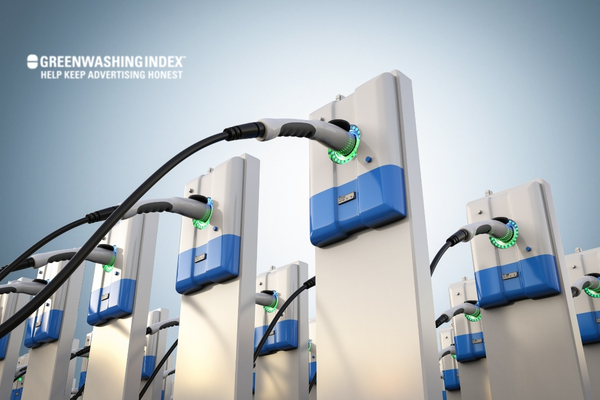
Charge Time Estimates To Keep You Moving
Charging time for your electric vehicle can vary a lot. It’s not the same for every car or charging point, and knowing these details is pretty important.
Here are some things that can change how long your EV takes to charge:
- The size of the battery: Think of it like a water tank. A big tank takes longer to fill than a small one, right? The same goes for EV batteries.
- How much power is left in the battery: Starting from half full will take less time than if your battery is completely empty.
- The speed of the charging station: Some chargers are like a dripping tap, while others are more like a fire hose. Faster chargers will fill your battery quicker.
- The type of charger you use: There are three basic types – Level 1, Level 2, and DC Fast Charging. Each one has its own speed, Level 1 being the slowest and DC Fast Charging being super quick.
- Temperature: Batteries don’t like it too hot or too cold; extreme temperatures can slow down charging.
Now, here’s what this means for actual charge times:
- Level 1 Charging (Slow): This uses your regular home outlet. It can take all night or even longer – sometimes up to 24 hours if you’re filling up from empty on those bigger batteries.
- Level 2 Charging (Medium): You might find these at home installations with higher voltage or out in public spots when you go shopping or to work. They usually get the job done in around 4-10 hours – much faster than Level 1!
- DC Fast Charging (Quick): These bad boys can get you charged up in as little as an hour! But not every car can handle them, nor does every place have them.
So, when writing an EV Buying Guide, remember that patience pays off when we talk about charging our electric vehicles – getting into good charging habits makes life easier!
Knowing all these factors helps us understand why different cars need different times at different places, even with similar batteries inside them.
And always keep this concept handy – just as we plan our gas station visits with normal cars, planning our EV charge times helps keep us on the move without any hiccups!
Also Read: DIY Christmas Decorations: 30 Easy Festive Ideas!
Evaluating The Real Cost To Run An EV
When it comes to buying an electric vehicle (EV), it’s not just about the sticker price. The real magic numbers are what you spend after you turn the key—or, in an EV’s case, push the button.
When you’re thinking about getting an electric vehicle, it’s smart to look at how much it costs to keep it running. Imagine a regular car. You know that putting gas in is one of the main costs. For an electric vehicle, instead of gas, you use electricity.
Here’s what you need to think about:
- At-home electricity rates: Most people charge their EVs at home. So, knowing what your power company charges for electricity is key. Your bill depends on how much you drive and your car’s battery size.
- Public recharging costs: Charging on the go varies a lot in price. In some places, it’s free; others charge by time or the amount of energy used. It can get pricey if you rely on it often.
Breaking down the costs:
- Check your home electricity rate. It might be lower at night.
- Estimate how far you drive each day or month.
- Learn your EV’s energy use. It’s like miles per gallon but for electric cars.
- Do some math. Multiply your car’s energy use by your driving distance and then by the electricity rate.
A pro tip from this “EV Buying Guide” is to consider special EV rates—some power companies offer cheaper rates for charging at low-demand times.
Keeping Up With Maintenance And Servicing Expenses
When you buy an electric vehicle (EV), it’s crucial to think about not just the upfront cost but also what it will cost to keep your EV running smoothly over time. This means considering the maintenance and servicing expenses, which can be quite different from those of a traditional gas-powered car.
Predicting Long-Term Care For Your Electric Vehicle
Alright, now let’s talk about what it costs to keep an EV in good shape over time. Here’s a fact: Electric vehicles generally cost less to maintain than traditional cars because they have fewer moving parts—no oil changes needed!
But let me list out some typical expenses:
- Regular checks: The brakes, tires, and other basics still need regular looking after.
- Battery health: The big deal with EVs is their battery life—the closer it gets to its end, the more expensive care could be.
Now let’s compare:
- Typical Repairs: Brakes and tires wear out slowly and won’t surprise you too much with their cost.
- Battery Pack Replacement: Think of this as a big expense that might pop up way down the road—it can be costly but doesn’t happen often.
Keep these things in mind when thinking about long-term care:
- Most batteries are good for years, but check warranty details carefully—they differ between brands!
- Regularly check brakes and tires—they’re important for safety and efficiency.
Remembering these maintenance tips from our essential “EV Guide” will help make sure that your electric vehicle keeps running smoothly without unexpected bills hitting hard!
Also Read: Recyclability of Milk Cartons: Is It Possible or Not?
Weighing Up Electric Vs Gasoline-Driven Wheels
When I think about getting a new car, the big question I ask myself these days is whether to go for an electric vehicle (EV) or stick with a traditional gasoline-powered car. Let’s take a closer look at both options in terms of their performance and what they cost to buy.
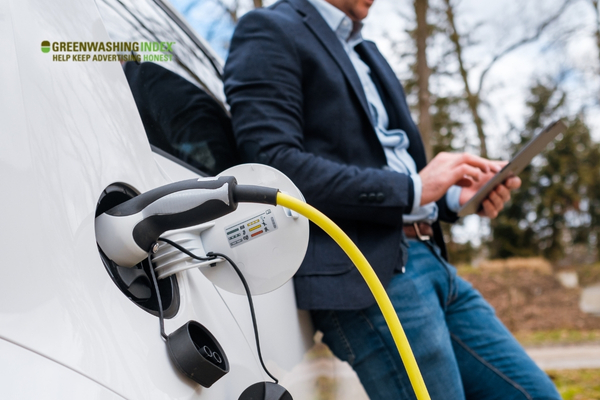
Performance & Purchase Comparison Overview
Performance Comparison
The first thing that hits my mind about EVs is how smooth and quiet they are to drive. They have instant power right when I step on the accelerator – no waiting for the engine to rev up.
This quick response feels great, especially when I need a quick start at traffic lights or on the highway.
Gasoline cars, on the other hand, can take a little time to get going. And while they can be pretty fast, too, it’s not quite that instant push you get with an electric motor. They’ve got their charm, though; there’s something about the roar of an engine that makes driving feel exciting.
Purchase Cost Overview
Now, let’s talk money. Normally, EVs cost more upfront than gasoline cars. This higher price comes from all that tech packed into them – like batteries and electric motors, which are still pretty expensive to make.
Even though EVs hit my wallet harder at first, some things balance this out over time. They usually cost me less to run because electricity is cheaper than gas where I live. Plus, I don’t have to service them as often because they’ve got fewer moving parts – no oil changes needed here!
Incentives and Tax Breaks
I mustn’t forget that some places give out special deals like tax breaks if I choose an EV. It’s like getting a helping hand from the government just for going green!
The Final Say
Choosing between an electric vehicle and one that runs on gasoline comes down to how much I value immediate driving pleasure against long-term savings and environmental concerns.
If I want speed and savings in the long run and am okay with paying more now, then an EV might be just what I’m after in my next vehicle purchase.
But if upfront costs are my biggest worry or if there’s no easy way for me to charge up overnight or during work hours – maybe sticking with gasoline power could suit me better for now.
Going through this EV buying guide helped clear up what matters most when picking between these two rides.
Leveraging Incentives To Drive Down Costs
When you think about buying an electric vehicle, or “EV” for short, you might get sticker shock—it’s not unusual to see the price of an EV and worry about how it fits into your budget.
But hold on! There’s good news. You can save a lot of money if you know about special deals called incentives meant to make going green more attractive and affordable. These are like rewards for making the switch to an eco-friendly ride.
National And Local Contributions For Going Green
Let’s deep dive into how both federal and state tax incentives can turn EV buying from a dream into reality. The government offers these financial boosts because they want to encourage more people to choose vehicles that are better for the environment.
Federal Tax Credits: This is big—the United States government offers tax credits just for buying an electric vehicle! What does this mean?
It means that after you buy your electric car when tax time rolls around, you can subtract a chunk of money from what you owe in taxes because of your EV purchase. This credit can be as much as \$7,500! Now, that’s something worth considering in your EV Buying Guide planning.
State and Local Incentives: It doesn’t stop with Federal tax credits; your state or local government might have additional discounts lined up for you—each place has different benefits, so it pays to check out what’s on offer where you live.
For example:
- Some states give extra tax credits, which further lower your cost.
- Your city might offer a rebate—that’s like getting cash back after buying.
- Reduced registration fees or sales taxes are also common perks offered by some states.
- Certain places even allow electric cars to drive in the carpool lane, no matter how many folks are inside.
Remember, these benefits change based on where you live, and they’re often updated, so always double-check the information before making any big decisions.
So why do these incentives exist at all? Well, governments see the long game—they understand that less pollution from gas-powered engines means cleaner air and healthier towns.
They’re putting their money where their mouth is in hopes of inspiring people like us to join in the effort by choosing an electric vehicle next time we’re looking at a new ride.
Finding out what incentives apply to you could make all the difference—it changes “Can I afford this?” into “How much am I going to save!”.
That’s why knowing about all these potential savings is essential when creating our own EV Buying Guide; it helps turn those high price tags into numbers that are way friendlier on our wallets.
Also Read: Solar Panels Investment: Is It Really Worth Your Money?
Investing Wisely Between New Or Pre-Loved Electrics
When it’s time for me to buy a car, choosing between a brand-new electric vehicle (EV) and one that’s been used is quite the decision to make. Each choice has its perks and things to be careful about. Let me share with you how I go about making this important choice, keeping in mind my EV buying guide.
Considerations When Selecting New VS Used Vehicles
Let’s talk about what really matters when picking between a fresh-off-the-lot ride and one that’s had a previous owner:
- Battery Health: This is super important for EVs. Just like the battery in your phone gets tired over time, so does an EV battery. In new cars, the battery should be tip-top, but for used ones, it can be weaker. This affects how far you can drive before needing a charge.
- Warranty Woes: A new car comes with peace of mind because everything’s covered by a warranty – which means if something breaks down unexpectedly, it probably won’t cost you extra.
- Tech Trends: Tech moves fast! A newer model might have better features, like upgraded autopilot or faster charging times. With an older model, I risk these things being out-of-date.
- Dollar Decisions: Money talks! A shiny new EV will hit the wallet harder than one that’s been around the block a few times – but remember point 1: the savings upfront might mean less range down the road if that battery isn’t in great shape.
- Eco-Impact: Weirdly enough, getting a used car might score me more green points because reusing stuff is usually better for our planet than making new all the time.
- Insurance Ins and Outs: Insurance can cost less for older cars, but check this for yourself as it varies from place to place!
- Registration Requirements: Sometimes, there are benefits like tax breaks or special parking spots just for driving electric – these perks often apply no matter if your ride is new or used.
- History Homework: When buying used, I make sure to investigate its history thoroughly – accidents or constant repairs are red flags!
- Future Fun Facts: There are lots of crystal ball-type guesses at what will happen with EV tech and prices in future years; some folks suggest waiting could pay off as technology gets better and prices go down!
Remembering all this helps me invest wisely in my next electric ride while staying smart about my money and making sure I’m driving away happy, whether I choose brand-new or pre-loved electrics.
Tailoring The Decision To Fit Your Lifestyle
When I talk about finding the perfect electric vehicle (EV) for someone’s lifestyle, I like to think it’s a bit like choosing a new pair of shoes.
Just as you wouldn’t buy tight, snug sneakers for a marathon, you shouldn’t pick an EV that doesn’t match your day-to-day life. So, let’s lace up and walk through how to make sure your future EV fits perfectly with your routine.
Personalizing Your Purchase To Match Daily Life
Consider daily mileage: First things first, I ask myself how far I drive on an average day. This could be from home to work and back, or maybe the usual errands. It’s key because each EV has its own range – that’s the distance an EV can travel on one full charge.
Think about the longest journeys: Now and then, we all have longer than usual trips—whether it’s visiting family or taking that much-needed road trip. It’s good to know if my future EV can take me there without needing a charge midway.
Keep necessary trips in mind: Aside from leisurely drives there are trips that just can’t be pushed off – maybe it’s picking kids from soccer practice or making that weekly visit to my favorite spot. The last thing anyone wants is for their car to stop short of these essential destinations.
Local charger infrastructure is crucial: Before saying ‘yes’ to an electric sweetheart, understand where the nearest charging stations are located. This is much like knowing where gas stations are for traditional cars.
By thinking carefully about these points, I paint a clear picture of what I need in an electric vehicle. This way, when folks dive into their own EV buying guide, they already know their non-negotiables and essentials.
This means robust knowledge becomes their co-pilot as they navigate through EV tips and EV essentials and make a well-informed vehicle purchase decision robustly tailored for them.
Remembering these straightforward steps makes EV buying less daunting and more like piecing together parts of my regular life – ensuring the next electric ride isn’t just any car but one that feels made just for me.
FAQs
How long does it take to charge an electric vehicle fully?
It can take anywhere from 30 minutes at a fast-charging station to about 12 hours with a home charger. It depends on your EV and charger type.
Can I save money by switching from a gas car?
Yes, you can often save on fuel and maintenance costs when you switch to an electric vehicle due to fewer moving parts and no need for gas.
What is better for me – a hybrid or a fully electric vehicle?
It depends on your needs. If you drive short distances and want zero emissions, go for a fully electric vehicle. Choose a hybrid if you often drive farther than an EV’s range or lack charging access.
Conclusion
The journey into the electric vehicle world is thrilling and full of promise. As I combed through each element in this EV buying guide, it became clear that purchasing an EV is more than just a trend; it’s a conscientious choice toward a cleaner environment and a testimony to incredible technological progress.
Considering factors like battery range, charging convenience, and ownership costs emphasized how essential meticulous planning is to maximize the benefits of driving an electric car.
Owning an EV comes with a unique set of challenges and rewards. Balancing initial costs against long-term savings, understanding maintenance demands, and figuring out daily practicalities are all critical considerations.
But with generous incentives available and the increasing feasibility of electric vehicles fitting various lifestyles, it’s evident that now is an exciting time to join the growing community of EV owners.

